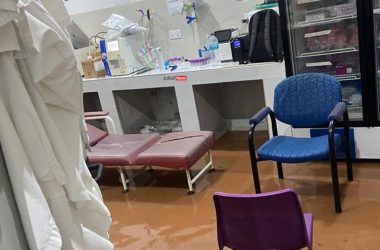By Frederick Tendeng
The results of a nationwide survey conducted by The Study Group of Senegal’s League of Consumers shows that hypertension is a real threat to many households in Dakar as well as rural areas. Statistics from this survey show that the prevalence of hypertension in Dakar is 25%, whereas it is 20% in rural areas. The study was conducted in all major health facilities. It revealed that the most alarming situation prevails in the religious Mourid city of Touba where the prevalence of hypertension is 52% of patients who come for consultations in hospitals. Likewise for diabetes which is singled out to be another dangerous threat to public health. The survey of the consumers study group in a Dakar based company that employs about 1,200 found out a 6% prevalence of diabetes in the said company.
This study confirms a statement recently held by Professor Saïdou Nourou Diop, chief medical officer of Dakar’s Marc Sankalé Anti-Diabetes Center. He said in November that more than 2,000 new cases of diabetes are recorded in Senegal each year.
Professor El Hadji Niang of Dakar’s Aristide Le Dantec Hospital said this alarming state of health of Senegalese citizens is “the direct consequence of an unhealthy lifestyle combined with a poor quality water supply that has a very high concentration of sodium especially in the cities of Touba and Diourbel”.
The League also warns consumers in Senegal that “hypertension and diabetes are part of the leading causes of death in the adults’ population while being the 2nd cause of death for all ages” (information Ministry of Health of Senegal 2005).
The report from the study strongly recommends Senegalese people to reduce significantly the consumption of fat oils (peanut oil, palm oil) salt, sugar and bouillon cubes or powder. “These products will also be the subject of our next study” Professor Niang stated.
In the same vein, the Consumers League advises “taste education for children to encourage a healthy feeding behaviour on them” as the study explains that “reduction of cardiovascular risk factors significantly improves the quality and life expectancy”.
Trending :
- 17 hours ago
- GPA Staff Sent Home Over Multi-Million Dalasi Financial Scandal But…
- 18 hours ago
- Gambia Gov’t Puts Finishing Touches To Gamtel/Gamcel Privatisation Project
- 18 hours ago
- Story Of Clothes Dearth At Mile II Galvanizes SK Jaiteh Into Donating To Inmates
- 19 hours ago
- Cement Importers Association Petitions Gambian Authorities
- 1 day ago
- Ex-UDP UK Secretary Darboe Dismisses Fears Of Bensouda Repeating Barrow’s ‘Betrayal’




